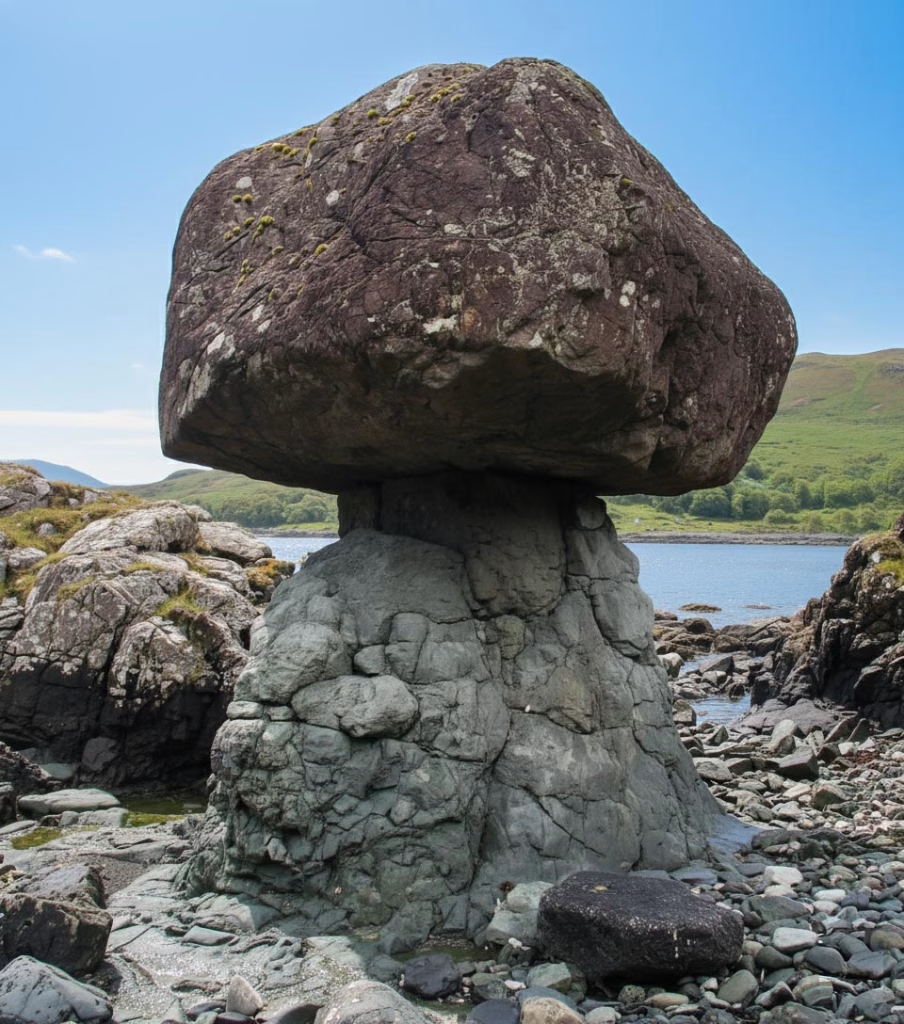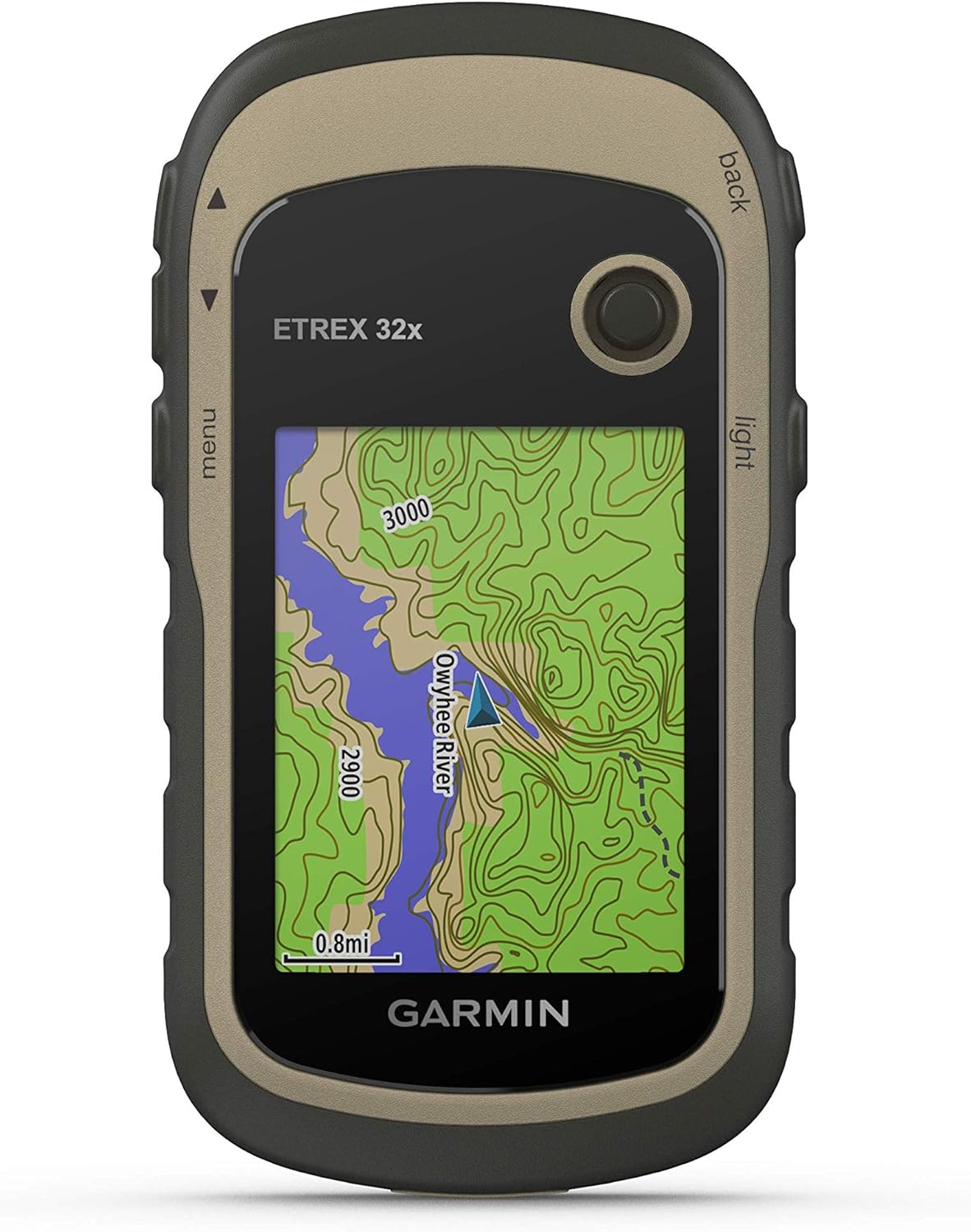What is the Croggan Mushroom Stone?
The Croggan Mushroom Stone on the Isle of Mull is a dramatic sea stack that stands proudly apart from the mainland. Its most distinctive feature is the unusual shape, a broad, dark “cap” of harder rock balanced on a narrower, lighter column beneath. This natural sculpture perfectly illustrates the power of erosion and the forces that shape Mull’s coastline.

How Did It Form? The Story of Wind and Wave
The Croggan Mushroom Stone tells a geological story that stretches back millions of years. Much of Mull was born from ancient volcanic activity, leaving layers of lava and softer sedimentary rock. Over time, the contrast between these rock types shaped this incredible feature.
The “cap” consists of tough basalt that resists erosion, while the “stem” is made from softer rock such as ash or sediment. As the Atlantic’s waves, wind, and rain pounded the coast, the softer layers wore away faster than the harder ones above. This process, known as differential erosion, gradually sculpted the classic mushroom shape we see today.
Eventually, nature will win again. Thousands of years from now, the base will weaken, and the heavy basalt top may collapse into the sea, a reminder that even stone landscapes are temporary in the face of time.
Where Is It and How to Visit
The Croggan Mushroom Stone (location) is on the southern coast of Mull, near the small settlement of Croggan on the shores of Loch Spelve. This quiet corner of the island is known for its dramatic coastal scenery and abundant wildlife. It’s an ideal destination for anyone who enjoys exploring off the beaten track and experiencing Mull’s wilder, more secluded side.
Getting to the Isle of Mull
- By Ferry: Most visitors reach Mull by ferry from Oban to Craignure, operated by Caledonian MacBrayne. Cars are welcome on board, making onward travel easy.
Getting to the Mushroom Stone from Craignure
- By Car (best): From Craignure, follow the A849 along Mull’s southern shore. After a few miles, take the left turn signposted to Lochbuie / Croggan (near Ardura). Continue on the narrow, single-track road around the head of Loch Spelve until you reach the small settlement of Croggan. The drive is scenic and takes roughly 30–40 minutes (about 14 miles) depending on traffic and road conditions.
- Turn-off & road conditions: The lane into Croggan is narrow and can be winding; expect single-track sections with passing places. Drive carefully and give way where necessary.
- Parking: Park at the very end of the road on the right just before the forest begins. There is no formal car park, so leave space clear and follow any local instructions.
The Walk
From the parking field at Croggan, the walk to the Mushroom Stone is short, just a few hundred metres. You cross uneven ground and a small patch of forest to reach the viewpoint. Paths may be faint in places, so wear good footwear and bring a map or GPS. The coastal views and the Mushroom Stone make the walk worthwhile.
Tips for Visitors
- Footwear: Wear sturdy, waterproof hiking boots. The route can be wet and slippery.
- Weather: Mull’s conditions change quickly. Pack layers and be ready for sun, wind, or rain — sometimes all in one afternoon.
- Navigation: Carry an Ordnance Survey Explorer 375 map (Isle of Mull East) or a GPS device. Paths are faint in places.
- Photography: Early morning and late afternoon offer the best light, especially at sunrise or sunset.
- Safety: Stay back from cliff edges and beware of loose, slippery rocks, particularly in strong winds.
- Facilities: There are no shops or public toilets in Croggan itself. The nearest basic store, café or restrooms are in Lochbuie (about a 15‑20 minute drive away) so please bring snacks, water and any supplies you’ll need.
- Wildlife: Look out for seals, seabirds, and, with luck, a passing otter.
- Leave No Trace: Take all litter home and respect Mull’s fragile environment.
- Respect Landowners: Much of the area is private land. Follow the Scottish Outdoor Access Code and close gates behind you.
GPS handheld device with 2.2-inch sunlight-readable colour display and preloaded with topoactive maps with routable roads and trails for cycling and hiking.
The Croggan Mushroom Stone isn’t just a geological wonder, it’s a symbol of nature’s creativity. Visiting it connects you directly with the forces that shaped Mull itself. With a bit of preparation and care, you’ll enjoy an unforgettable journey to one of the island’s most striking natural landmarks.


